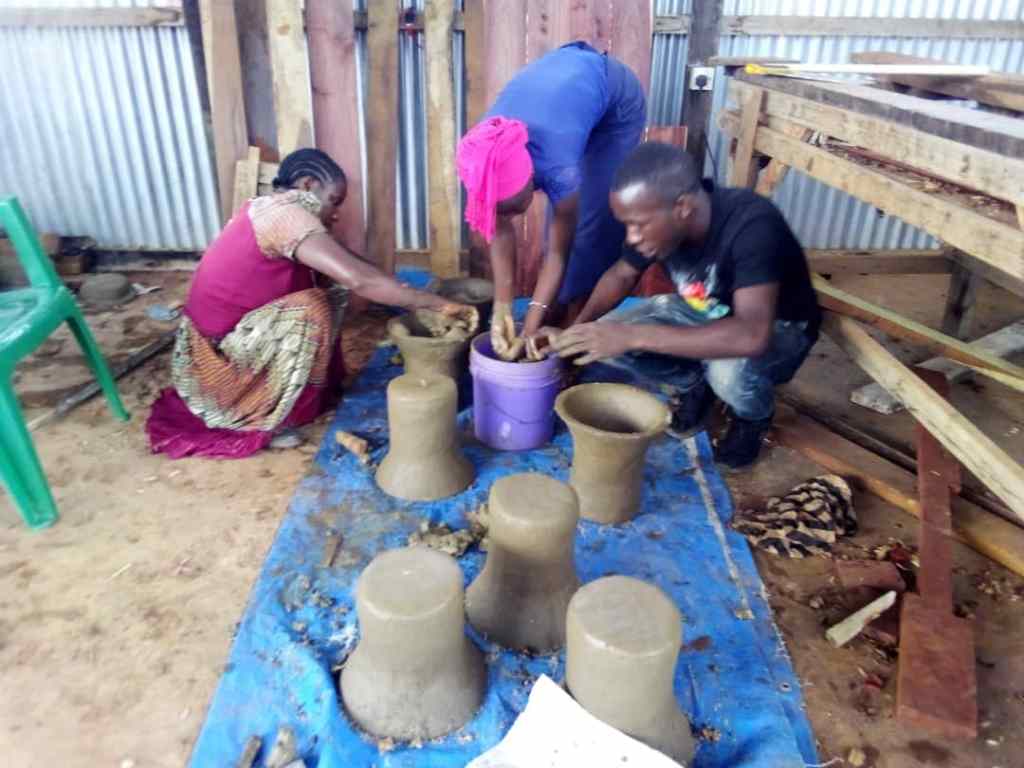The task of cooking is not always such an easy or pleasant one in our community. Someone will have to go out and search for fuel, which is most often wood. This task in itself will take a considerable amount of time, which often takes time away from other activities, such as education or work. Furthermore, it will sometimes be a dangerous task with people having to search for wood in remote areas. Once the wood is collected, back home the stove will be lit, and soon smoke will engulf the home. The amount of indoor air pollution caused by these traditional stoves will potentially lead to bad health and serious respiratory illnesses.
Then, take into consideration that these tasks, these serious risks, will often be suffered by women and children for the most part.1
Beyond these problems, there is the impact to the environment to consider: not only is the pollution released from these stoves harmful, but the traditional stoves burn so much wood that the harvesting of woodfuel can contribute to deforestation.

This is a complex problem with various factors that can contribute to the causes of high demand for woodfuel and causes of land clearance linked to deforestation. A few examples are:
- Limited opportunities for income & livelihoods
- Firewood has no cash cost and is easy to source
- Few accessible alternative fuels
- Increased rates of deforestation.
- Few accessible alternative fuels
- Firewood has no cash cost and is easy to source
- People don’t have a knowledge of alternative fuels and can’t afford them
- Increased rates of deforestation.
- People have a limited time to cook (e.g. due to time spent collecting fuel)
- Older, less efficient stoves quicker to use
- Increased rates of deforestation.
- Older, less efficient stoves quicker to use
- ‘Slash and burn’ agriculture degrading land
- Land clearance for livelihoods
- Increased rates of deforestation.2
- Land clearance for livelihoods

Between the environmental damage, the harmful effects on health, and the time being taken away from work and education, we knew we needed to make changes in our community.
Our traditional smoky cooking stoves needed to be replaced with cleaner and much more fuel-efficient ones. Therefore, we started working with SNV who have helped to train people in our community in how to make clay stoves. These burn biomass fuels in a cleaner and much more efficient manner and require 50% less firewood.
With the introduction of these improved cookstoves, the people of our community can cook without smoke engulfing their homes and damaging their health. They can help the environment by reducing the harmful emissions, and they do not have to spend as long searching for firewood, meaning they have more time for other activities. Furthermore, they can help us protect our environment as we tackle deforestation. Using these clay stoves requires using less firewood, and this together with climate education and our reforestation projects means we can target the factors that contribute to deforestation. We may only be at the early stages of this project, but we are already excited at the changes being made in our community.
Together with our dedication to educating people about climate change, changing our agricultural practices, and our commitment to reforestation we are working hard to take climate action and to help provide a better quality for life for the people of our community, turning our long-term vision of equality and sustainable development into reality, project by project.

- https://snv.org/sector/energy/topic/improved-cookstoves
- A detailed & insightful look into this can be found at www.climatelearningplatform.org/sites/default/files/resources/calibrating_cooking_for_kigoma_iied_0.pdf

